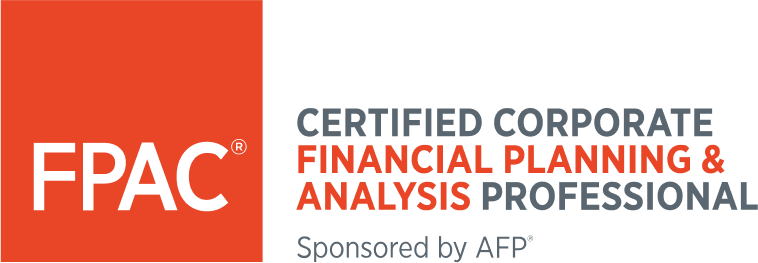FPAC Profile: Beyond the Bottom Line: Shared Insights on Excelling in Nonprofit FP&A

With a nonprofit organization, it’s not about the bottom line. Your primary consideration is how the financial decisions you make will impact the lives of the people the organization is serving. “The mission, vision and values are just as important, if not more so, when making financial decisions,” said Edmond.
Like so many in finance, Edmond Vrolijk started his career in accounting. His management trajectory started with a student loan servicing company where he managed over 20 accounting specialists. It was there that he learned the importance of relationship management and team dynamics.
Edmond started as Senior Accountant with a grocery store chain in the Southeast. In that role, he had to manage several manual processes, which provided him with the opportunity to build a solid foundation in accounting. Here he also worked in finance which is where his FP&A career began.
The Wounded Warrior Project — a nonprofit organization that strives to honor and empower wounded service members — is where he continued his career in FP&A. “I started as a financial analyst,” said Edmond, “and as the organization grew, I was promoted to Financial Planning & Analysis Manager.”
One of the elements of FP&A that interests Edmond the most is the variety. There are the usual processes like month-end close and reporting, but due to the nature of FP&A, every day is different, and every task is nuanced. “I get to use different
skills and methods to accomplish the tasks at hand,” he said. Plus, he can work with a lot of interesting people every day.
The education, skills and experience you need
Edmond largely credits his education — a degree in finance and an M.B.A. — with giving him the credentials he needed to arrive at his current position. But that’s not all. There are a number of soft skills critical to success in his job.
“Having people skills or customer service experience helps since you must manage relationships with business owners who have different personalities; relationship management is important,” he said. Managerial experience is also important; it allows you to see things from the business owner’s point of view, which “makes it easier to relate to them when you have to make adjustments to their forecasts.”
Communication skills are also very important in an FP&A role. “You must be able to clearly communicate with others,” said Edmond. While we have a number of communication mediums at our disposal — email, text, messaging and even the phone — “it can be one of the easiest things to get wrong,” he said. “This is especially true when communicating with non-finance people.”
Another key skill is attention to detail. You always want to make sure everything in your reports, forecasts, financial data, etc. is correct. Edmond recommends that you double and triple-check it because “once you start producing work with errors, your co-workers might begin to doubt the validity of your work and/or lose trust in your shop,” he said.
And last but not least is relationship management. In order to ensure a culture of good and candid communication, you need trust, which means actively putting in the effort to build and maintain relationships with business owners in your organization. That way, they “will not hesitate to come to you or be embarrassed to ask questions if they don’t understand something,” said Edmond.
While Edmond has experienced many points of pride in his career journey, the thing he is most proud of is the team of talented and capable financial analysts he currently has the privilege of managing. “They allow our shop to run smoothly and efficiently,” he said. “Leading a team has been very rewarding; I get to guide them, help them grow and create their own career success.”
Working for a nonprofit is its own reward
The work you do for a nonprofit organization (NPO), according to Edmond, is essentially the same as that of a for-profit company. “There’s the usual budgeting, forecasting, variance analysis, reporting, debits and credits, meetings, projects, more meetings, etc.,” he said.
The strategic difference between working for an NPO and a for-profit organization is the mindset: With a NPO, it’s not about the bottom line. Your primary consideration is how the financial decisions you make will impact the lives of the people the organization is serving. “The mission, vision and values are just as important, if not more so, when making financial decisions,” said Edmond.
The best part? Your work is about so much more than a paycheck or profits. It’s about the cause, which makes coming to work feel more like a calling than a job. “A bad day at Wounded Warrior Project is still better than a good day somewhere else,” said Edmond.
Everyone in FP&A needs to keep an eye on AI
“The most critical issue today is the emergence of artificial intelligence (AI) and its use in FP&A,” said Edmond. “Right now, everyone is in a discovery stage, and it will be years before it is adopted in normal operations, but it is certainly something to keep an eye on.”
Stemming from this critical issue is the need to acquire AI and BI capabilities, advises Edmond. Because that is where the industry is heading, all FP&A professionals need to get accustomed to their presence and be educated about how they work.
This is, of course, why Edmond himself is adding training and education on AI to his to-do list. He feels this will help him to continue developing professionally. He is also considering the CTP certification.
“Continuously seeking out information and growth opportunities helps to improve not only my skills but those of my team,” he said.
Going for the FPAC was an easy decision
Edmond is fortunate to be working for a “great organization that encourages professional development.” Their support made his decision to go for the FPAC certification an easy one.
Everyone has their own personal best practices for preparing for the FPAC exam. Edmond mainly used the exam prep platform, but he also went “old school”: “I printed out all the chapters and highlighted what I thought was the most relevant and important,” he said.
The way in which the FPAC has most impacted Edmond’s career is in the expansion of his professional network. He said that since receiving his certification, he has met some great people in FP&A.
A believer in lifelong learning, Edmond said he would absolutely recommend the FPAC to others. “You should always look for opportunities to learn and increase your knowledge, especially when you can obtain certifications in your career field.”
Are you ready to increase your FP&A knowledge? Get started on your FPAC certification today!

